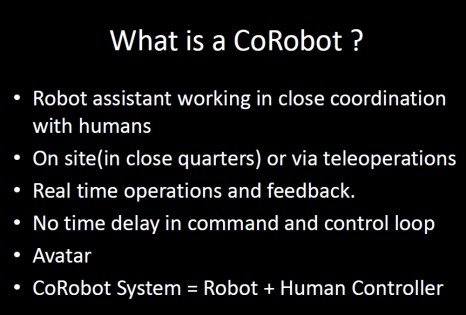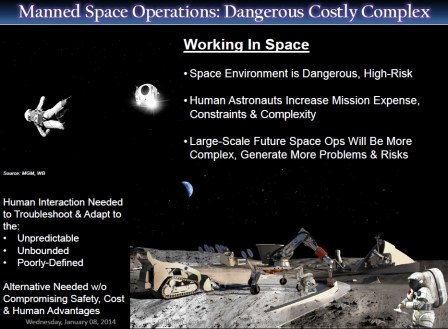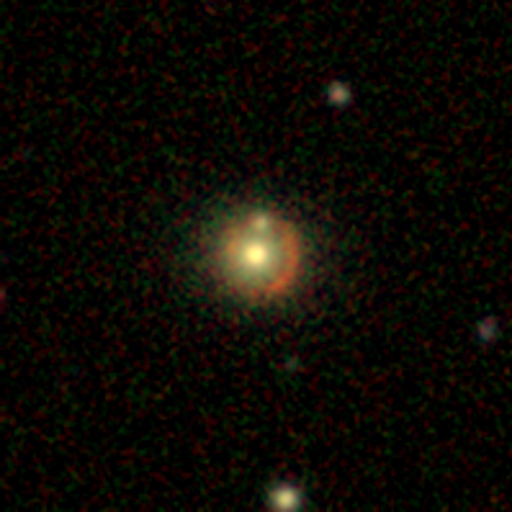The latest presentation to the Future In-Space Operations (FISO) study group is now posted in the FISO Working Group Presentations Archive. Both slides (pdf) and audio (mp3) are available for the talk, Co-Robots and the Future of Space Activity, Madhu Thangavelu , USC – Jan.8.14
Space exploration and development is often presented as a robot versus manned binary choice but it is really robot versus manned + robot. To accomplish significant development in space, humans will need the productivity multipliers provided by robots, particularly tele-operated ones. Resource extraction and processing, construction, and other tasks in the vacuum and radiation of space, in the dust of the Moon, etc will be controlled by people nearby in safe and cozy habitats.
Thangavelu’s presentation discusses many topics related to such scenarios. He starts with the CoRobot concept, in which robots work closely with people to assist them in different ways. He then moves to the SARA (Surrogate Astronaut Robot Avatar) concept in which a person wears an elaborate suit whose movements are mimicked by a robot out, say, on the surface of the Moon. Thangavelu lays out a plan for developing and testing SARA systems starting with a facility on the ISS.
Here is a sampling of his many slides:








